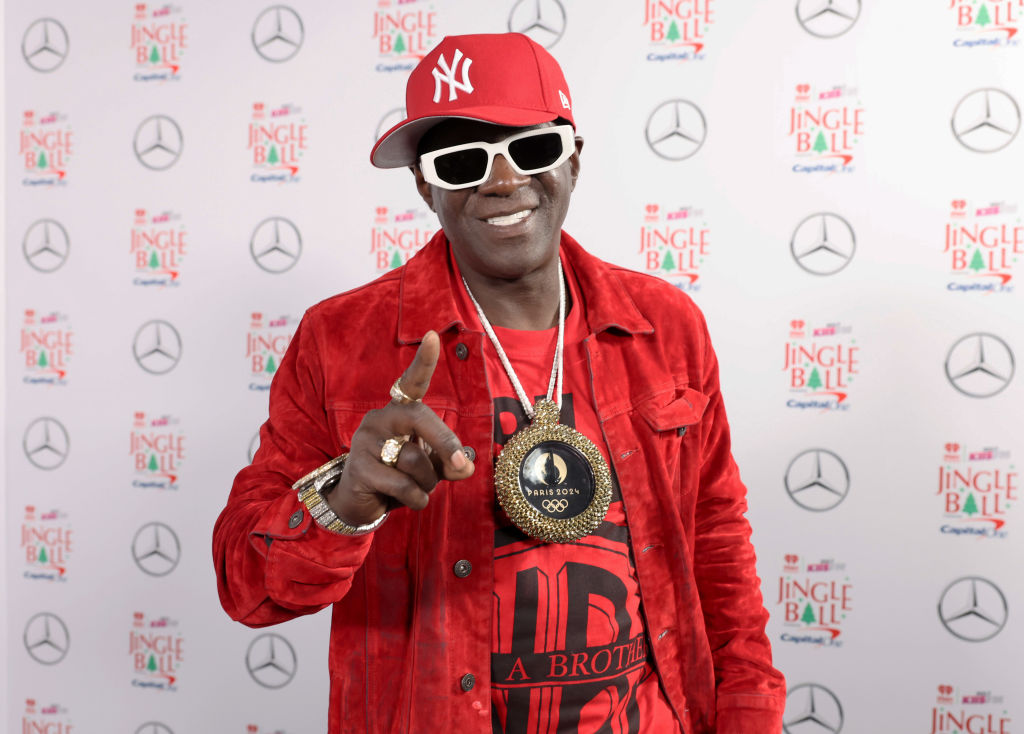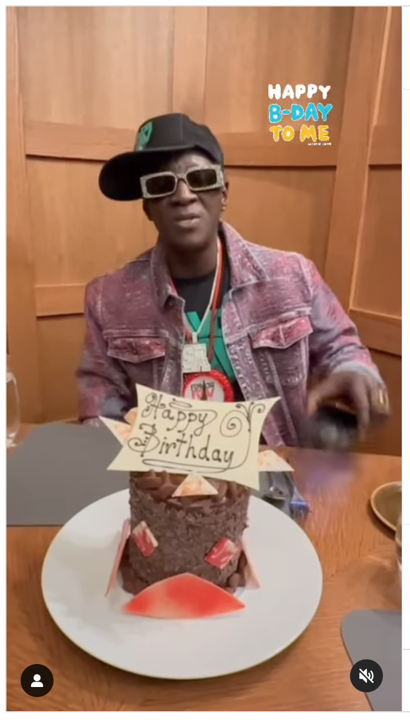
This year’s birthday is a little more special for hip-hop icon and hype man Flavor Flav. Not only will be be celebrating his 66th birthday, but he’s going into his 5th year of sobriety.
Last year on October 10th, Mental Health Awareness Day, Flav celebrated his four year milestone and shared just how far he’d come.
Detailing how much of an impact the Sonia: AI Therapy app has had on his journey, Flav said he’s now hoping to give back and help others going through a similar journey. He added that he wants to “bring a little more happiness to the world.”
“I always like to be the first to do something revolutionary. This is something special that has the ability to help so many people,” he ended. “I reached out to the Sonia team to cover the cost of subscriptions for anyone who signs up today. Help me help you. 👍🏾🙏🏾🫶🏾”
Back in January 2023, the Public Enemy founding member appeared on the Off the Record with DJ Akademiks podcast and admitted that he “never really let people know exactly” what was going on with him at the height of his past addiction.
“There was a time that I was spending $2,400 to $2,600 a day… for six years straight, you do the math,” he said. “That’s how much I spent on drugs.”
During the worst periods of his addiction, he was spending almost $1 million on drugs a year.
Flav explained that he “maintained myself very well” while using and “kept it hidden too,” but he was ultimately able to quit abusing substances and start his sobriety journey in 2020.
“I guess God wanted me to live. And he knows that I’m a mouthpiece to the world,” he said at the time. “So, I feel that God let me live through that, so that way, I could teach people about the mistakes that I made. And hopefully, they won’t make them later on in life.
How You Can Help Someone Get Sober
According to the American Addictions Centers, there are 3 main steps to get back on the road to sobriety:
Step 1: Recognize the Need to Get Sober
The first step to getting sober is recognizing and admitting that you have a problem with drug or alcohol misuse. This is typically the most challenging part. Denial is a common response. It’s difficult to admit that you have lost control over your substance use.
While only a healthcare provider can formally diagnose a substance use disorder using the Diagnostic and Statistical Manual of Mental Disorders, fifth edition (DSM-5), there are signs that indicate you or someone you love might be struggling with alcohol or drug misuse. Some of these signs, based on the DSM-5, include:
- Using a substance for longer than or more frequently than intended.
- Making unsuccessful attempts to quit or cut back on substance use.
- Failing to fulfill role responsibilities at home, work, or school due to substance use.
- Continuing to use a substance even though it has caused or worsened a physical or mental health condition.
- Craving or having strong urges to use the substance.
These are only a few of the signs that may indicate a substance use disorder. A licensed clinician uses this criteria—and more—to determine the likelihood and severity of a substance use disorder and formulate a treatment plan.

Step 2: Reach Out
Once you’ve admitted that you have a problem with substance misuse, getting help is the next step.
Sobriety is not a solo mission. In fact, getting sober and sustaining sobriety is easier when you have a trusted support system motivating, encouraging, and supporting you along the way. Studies indicates that having support from others can improve a person’s chances of engaging in and completing detox and treatment for addiction.
Loving and encouraging family and friends can definitely help support your journey to become sober.
When reaching out to family and friends for support, it’s important to choose wisely. If your circle has grown to include individuals who enable or trigger you to drink or misuse substances, they probably aren’t the best people to ask for help since they may prevent you from breaking the cycle of addiction. In fact, your journey to sobriety will likely involve strengthening some relationships and purging others. You may find yourself leaning on your trusted support system a lot and breaking ties with those who do not aid you in your recovery.
Step 3: Find the Right Treatment Program
As described by the National Institute on Drug Abuse (NIDA), there is not a one-size-fits-all treatment program for addiction.2 Therefore, it’s important to ask questions to ensure that the program you want meets all of your needs. There are multiple factors to consider, including cost, reviews, licensing, accreditations, amenities, and treatments.
First and foremost, find a treatment program that has a positive track record in terms of patients completing treatment and maintaining sobriety. This is most likely to occur in programs that provide services and therapies based on research. Evidence-based addiction treatment uses the current and best research-based evidence to make informed decisions about your rehab care. Facilities that employ evidence-based treatment for addiction use therapeutic interventions that are based on decades of clinical expertise guided by research, systematic investigation, and scientific studies that have demonstrated to be effective—and generate positive outcomes for patients.
How Flavor Flav Came to Be
Born William Drayton, Flav was born in Roosevelt, New York, and grew up in nearby Freeport, two communities within the Town of Hempstead. Drayton is the cousin of former Penn State basketball player Shep Garner, and of Brooklyn MC Timbo King of Royal Fam. He is also a cousin of rappers Ol’ Dirty Bastard, RZA, and GZA of the Wu-Tang Clan.
He began teaching himself piano at the age of five, and mastered piano, drums and guitar at an early age, while also singing in the youth choir at his church. According to Chuck D, Drayton is proficient in fifteen instruments.
By the time he dropped out of Freeport High School in the 11th grade, he had been in and out of jail for robbery and burglary.
Drayton attended culinary school in 1978. Later, he attended Adelphi University on Long Island, where he met Carlton Ridenhour (who later became known as Chuck D). They first collaborated on Chuck D’s hip-hop college radio show, then began rapping together. Drayton’s stage name Flavor Flav was originally his graffiti tag.
Flav came to prominence as a founding member and hype man of the rap group Public Enemy, which he co-founded in 1985 with Chuck D. A year later, the group released “Public Enemy #1”, which brought them to the attention of Def Jam Records executive Rick Rubin. Rubin initially did not understand Flav’s role in the act and wanted to sign Chuck D as a solo act; however, Chuck D insisted that Flav be signed with them and the two were signed to Def Jam.
PE’s first album Yo! Bum Rush the Show was released in 1987. Flav served as the comic foil to Chuck D’s serious, politically charged style.
The group gained much wider fame with their following release, 1988’s It Takes a Nation of Millions to Hold Us Back, which went double platinum. By the time the political single “Fight the Power” was released in 1989, the group had become mainstream superstars. Along with Chuck D, the showman of the group and its promotional voice, Flav stood out among the members of Public Enemy as he often got the fans excited, appearing on stage and in public wearing big hats and glasses, and a large clock dangling from his neck.









